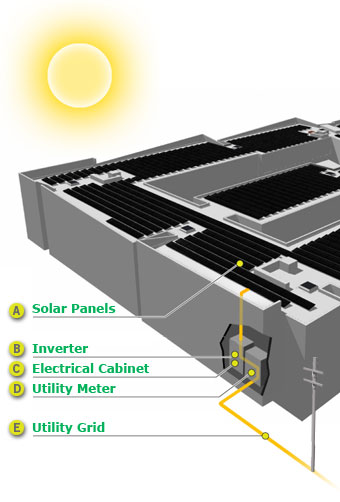


Sunlink Energy-Ares commercial grid PV systems is the most cost-effective type of PV system on the market today. They can provide system owners with over 25 years of electricity generation and often pay themselves back in under 4 years. Businesses engaging in solar projects are able to both depreciate financial contributions from their solar PV system assets and sell (when available) any excess electricity generated by the system back to the grid thus increasing the return on investment 25% ROI and enjoying added marketing benefit from a highly visible solar landmark.
Sunlink energy has successfully partnered with commercial solar developments around the world.
Commercial installations can be roof, wall, or ground mount depending upon building design and
space available.
Ares grid-connected commercial PV systems offer flexibility in design(10KW-10MW) and can easily serve space restricted installation sites. Each system is offered with a ground, roof, or carport mounting systems. Ares systems come in a variety of inverter voltage and frequency ranges and can be equipped with local GPRS or WiFi monitoring that can track performance, generation, and historic system data. These systems are 95% complete and are delivered ready to be installed.
Here show you our commercial system structure.
 How Commercial Solar Systems Work
How Commercial Solar Systems Work
Solar Panels: Solar panels are installed on your roof or adjacent
structure. These panels are made up of pv cells,which convert sunlight
into DC power.
Inverter: The DC power from the solar panels is sent to an inverter,
where it is converted into AC power, or standard electrical current
used to power your facility. Electrical Panel AC power travels from
the inverter to the electrical cabinet, often called a breaker box.
This power is then available to service all of your electrical needs.
Utility Meter: The utility meter continually measures your electrical
supply; when your solar system produces more power than you
need, the meter literally spins backwards, accumulating credits with
the utility company that will offset your next bill.
Utility Grid: Your business remains connected to the utility grid to
supply you with electricity when you need more power than your
system has produced, such as at night.

